
A
WORD FROM RBO's EDITOR:
We are pleased to have
many visitors from around
the world on this page.
Please, feel free to
download the audio-file
and to use it cost-free.
However, this will be
under the condition that
you inform RBO about
intended use by sending a
mail to: radiobridge@aol.com
Any other feedback would
also be appreciated.
The copyright remains
with RBO. |
"MAKING
IT WORK"

IN BOTSWANA - EPISODE A
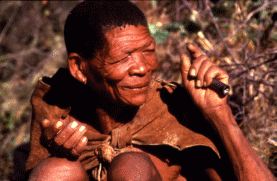
Basarwa (or San or
Bushmen) are the oldest
ethnic group of Southern
Africa and its original
inhabitants.
Archaeological evidence
indicates that people
bearing San features have
existed in Africa as
early as 30000 years ago,
well into the Later Stone
Age. Previously the San
inhabited parts of the
entire southern African
region, in what are now
the countries of Namibia,
Botswana, Republic of
South Africa, Lesotho,
Mozambique, Swaziland,
Zimbabwe, Zambia and
Angola. Today the
majority of Basarwa live
in Botswana and Namibia
with a few scattered in
Angola and Zambia. Their
present populations
estimated to be about
55000 to 60000.
Traditionally Basarwa are
a hunting-gathering
people who organise
themselves in small bands
which are normally
related by blood or
through marriage. Their
traditional way of life
is essentially nomadic in
that they periodically
move camps according to
food and water supplies
and also because of
personal inclination.
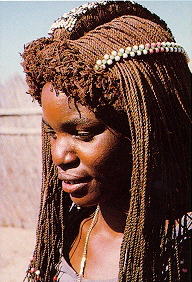
Basarwa today are in a
tremendous state of
change in which they can
be observed to be at
various stages of
acculturation to the
dominant Batswana
culture. Sustained
contact with Bantu groups
(namely Batswana),
intermarriage, steady
expansion of the cattle
industry across the
Kalahari desert and the
settlement of some
Basarwa at boreholes are
some of the most
important factors of this
change. The government
has a number of
settlement schemes for
Basarwa where they are
provided with livestock,
to make livelihood as
well as health and
educational facilities.
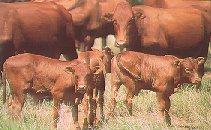
But Botswana's cattle
industry can now benefit
from an age-old know-how
of the Basarwa linking
them with cultures which
existed thousands of
years ago in other parts
of the world.

The Assyrians used
leather for footwear, and
also for wineskins which,
when inflated, served as
floats for rafts. But it
was the ancient Indian
civilisation that first
began to process leather
in the manner now known
as 'Morocco'. The
Egyptians also achieved
considerable skills in
working leather, using it
for clothing (even for
gloves), tools, weapons
and simple ornaments. The
Phoenecians came up with
an interesting use for
leather: according to the
historian Strabo they
fashioned it into water
pipes. In Roman times
leather was widely used
in all corners of the
Empire, where the best
tanning methods were
introduced if these had
not already been
developed locally. The
Romans used leather for
footwear and clothing,
and for making shields
and harnesses. A tannery
of the period was
discovered amongst the
ruins of Pompei and was
found to contain all the
equipment that was to
remain in use over
subsequent centuries.

Leather tanning is
undoubtedly one of the
oldest crafts known to
man. The skins obtained
from hunting and breeding
were initially used to
make clothing or tents,
but they became stiff at
low temperatures and
rotted in the heat. They
were probably later
rubbed with animal fats
to make them more
flexible and durable.
This represented the
first rudimentary tanning
process and is documented
in Homer's Illiad and
various Assyrian
writings. Another process
used in ancient times was
smoking - almost
certainly discovered by
chance. This then lead to
tanning with aldehyde, an
element present in the
smoke emitted by burning
leaves and green twigs.
It was soon found that
the putrefecation process
could also be slowed down
by drying, carried out by
exposure to the sun or by
rubbing in salt.
Vegetable tanning, in its
turn, was also known in
far off times, although
it is not clear how the
properties of the tannin
found in the bark of some
trees (especially oak)
was discovered.
 
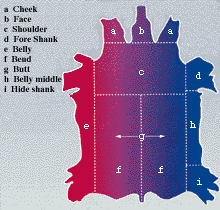 Leather,
like wood, is one of the
few raw materials that
nature will never
exhaust: its value as a
production and covering
materials is therefore
double: aesthetic and
ecological. Leather is
seldom used in its
natural state as it is
affected by variations in
temperature (hard and
stiff at low
temperatures, soft and
limp at high
temperatures) and liable
to rot. The purpose of
tanning is to eliminate
these problems with
special vegetable, animal
and synthetic substances. Leather,
like wood, is one of the
few raw materials that
nature will never
exhaust: its value as a
production and covering
materials is therefore
double: aesthetic and
ecological. Leather is
seldom used in its
natural state as it is
affected by variations in
temperature (hard and
stiff at low
temperatures, soft and
limp at high
temperatures) and liable
to rot. The purpose of
tanning is to eliminate
these problems with
special vegetable, animal
and synthetic substances.
We are going to tell the
story of the revival of
age-old know-how amongst
the San-people in
Botswana, and for those
who may want to know more
about the
leather-industry in
Southern Africa and
beyond, these are the 2
entry-points to click:


GEORGE
MSUMBA OF RBO
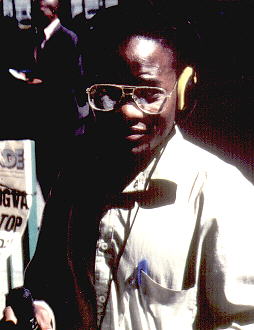
REPORTING FROM BOTSWANA
"How
to tan leather to a
perfect shine"
14'33" / LISTEN

You can go
back to the introduction
page by hitting the
button above.

You can go to the next
episode by hitting this
button,
or you access episodes of
your choice by clicking
on one of the thumbnails
below.


|